I came across two images recently which seemed closely parallel, and yet distinctly different.
When I saw this image:
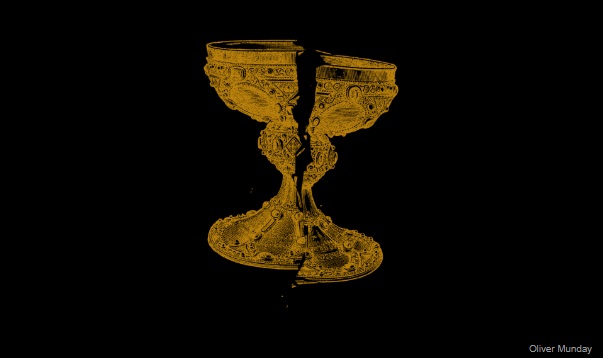
it immediately reminded me of this one, which I’d seen a few hours earlier:
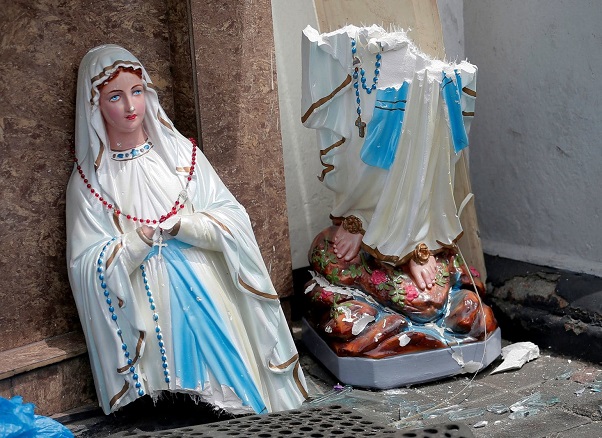
That’s the first clue as to how to play the Glass Bead Game: it’s as simple as this reminded me of that.
**
The two images are very different, yet very similar.
Each is an image with a strong Catholic resonance — one image is of a statue of the Virgin Mary, mother of Jesus, the other is an image of a chalice, the cup which Jesus passed to his followers on the night before his crucifixion, and which Christians to this day drink in their various communion services, remembering him.
And both images are very visibly shattered — the shattered statue representing the devastating impact of jihadist suicide-bomber attacks on churches across Sri Lanka, the shattered chalice representing the Catholic Church, “broken” by priestly sexual abuses, and in urgent need of reformation.
In playing Hesse’s Glass Bead Game, at least in the variants that I have devised and which I call the HipBone family of games, the move from one of those images to the other is a move. And the nature of the move is their resemblance across a cognitive distance.
**
Hesse’s book was written in 1943, a time when elite thinkers — and Hesse was certainly elite — were more comfortable than we are today with sheer erudition — and he gives as an example of a move in the game, a player who had been studying —
…the rhythmic structure of Julius Caesar’s Latin and discovered the most striking congruences with the results of well-known studies of the intervals in Byzantine hymns…
— and here’s another move for you, one of my own. Little did Hesse know it, but I myself was studying up on Church music one day, and dis=covered a book by a nun, Jane-Marie Luecke OSB, entitled:
Measuring Old English Rhythm: an Application of the Principles of Gregorian Chant Rhythm to the Meter of Beowulf
Not only is Sister Jane-Marie’s book itself a monograph length move, buy my association of Hesse’s move in his book and the good Sister’s monograph — one reminded me of the other — is also a move, and a most fortuitous one, starting in the pages of the book I devoted ten or more years of my life to, and ending in a discovery in an area of my own scholarly interest — and now, in my proud ownership of Sister Jane-Marie’s slim blue volume.
**
Remember, mnthe scope of the game allows moves to be made from the whole range of human intellectual production:
The Glass Bead Game is thus a mode of playing with the total contents and values of our culture; it plays with them as, say, in the great age of the arts a painter might have played with the colors on his palette. All the insights, noble thoughts, and works of art that the human race has produced in its creative eras, all that subsequent periods of scholarly study have reduced to concepts and converted into intellectual values the Glass Bead Game player plays like the organist on an organ. And this organ has attained an almost unimaginable perfection; its manuals and pedals range over the entire intellectual cosmos; its stops are almost beyond number. Theoretically this instrument is capable of reproducing in the Game the entire intellectual content of the universe.
If you can think it, imagine it, jot it down, sketch it, hum it, or represent it as an equation, you can make a move of it, linking it to some other move already in play, or proposing it for others to link to.
**
Music is notated in a score, and in the music of ideas which Hesse’s game proposes and my HipBone Games attempt to make playable, my suggestion is to notate such moves as simple graphs — in the form of two named nodes with an edge connecting them.
Here’s a board I’ve devised to allow you to notate a move with two concepts and a linkage between them. I call it my DoubleQuotes Board, and it represents the smallest board on which a HipBone Game can be played — either solo or with a friend:
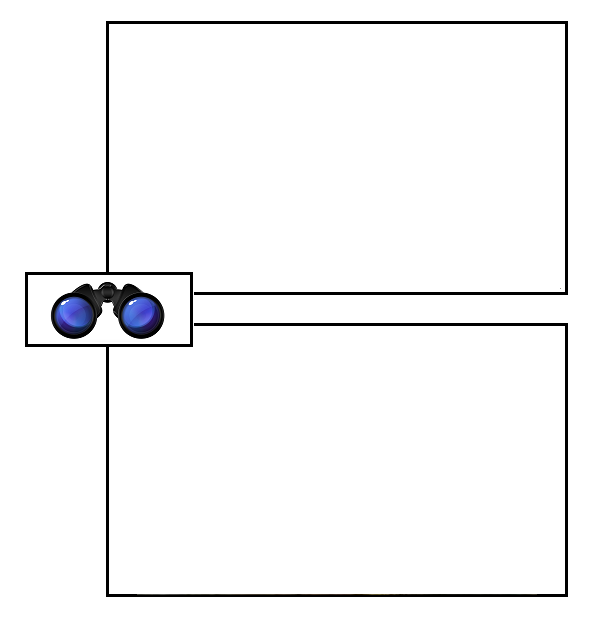
You can then assign your move to to a node in your game, and link it to another in a way that is rich in content at both ends, and which features rich connections between them, across some conceptual distance — perhaps across distinctly separate disciplines.
Here’s a DoubleQuote between Theodor von Kármán’s Vortex Street, and Van Gogh’s painting of the night sky:
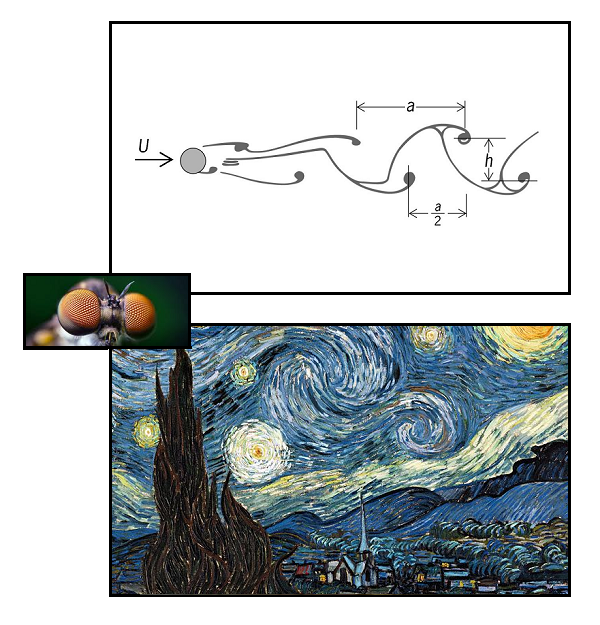
From the dynamics of flow nto post-impressionist modern art — that’s quite a leap! And yet the two are so close, they might as well be twins!
**
So — the challenge:
What memory-leap — what associative leap, what creative leap can you come up with that most neatly and beautifully links two conceptually distant but richly associated concepts? If you feel like it, you can identify them in the Comments section, or email me at my gmail address — my handle there is hipbonegamer.
You’ll be playing one of my playable variants of Hermann Hesse’s Nobel-winning Glass Bead Game. And if you have the skill-set to drop your move onto my DoubleQuote board and post it, so much the better.
Here’s that game board again:

**
Oh, and for Ali Minai in particular, given that self-referential paradox must be an issue in AGI — here’s a board for the self-referential one-move game, with one of my poems in it:
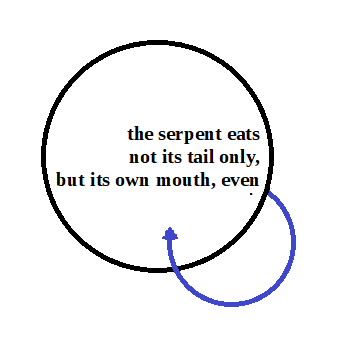
Wanna try?
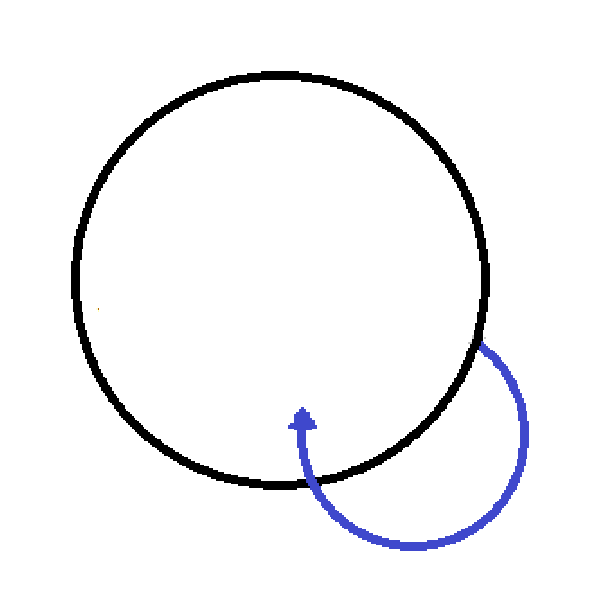
**
Enough — until next time..
There’s also the much older Gas Bleed Game, stretching from ancient fire temples, to the flares above today’s oil rigs, and tomorrow’s melting permafrost.
LOL! There’s also pyroflatulence.
And further affiant sayeth naught.
MT: “Xerxes, filius Darii, sapientius est.”
……………|””””””””””””””””””””””””’|
Xerxes: | “Scio me nihil scire!” |
………….. |,,,,,,,,,,,,,,,,,,,,,,,,,,,,,,,,,,,,,,,,,,,,,,,|”””|